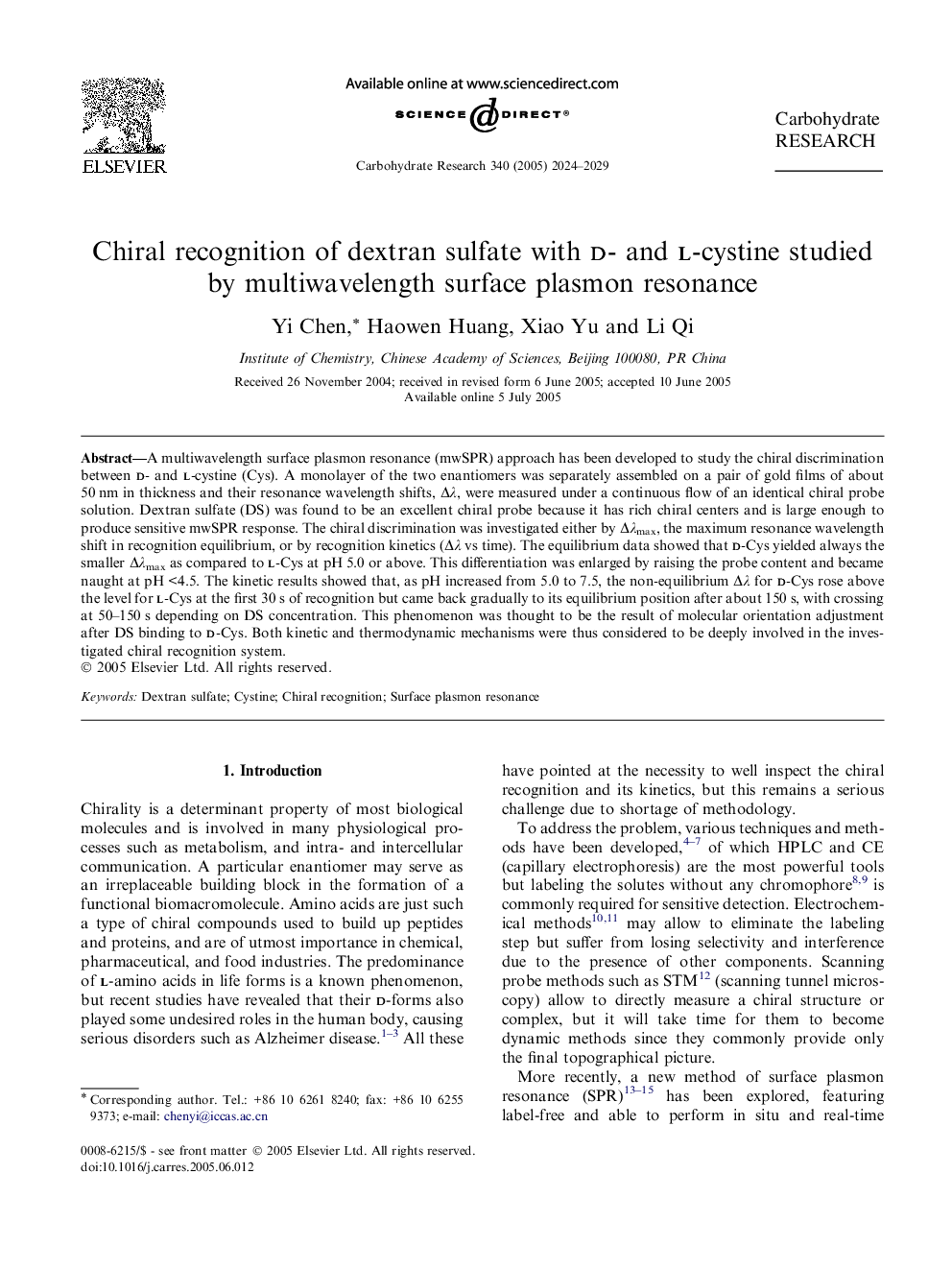| Article ID | Journal | Published Year | Pages | File Type |
|---|---|---|---|---|
| 1386289 | Carbohydrate Research | 2005 | 6 Pages |
A multiwavelength surface plasmon resonance (mwSPR) approach has been developed to study the chiral discrimination between d- and l-cystine (Cys). A monolayer of the two enantiomers was separately assembled on a pair of gold films of about 50 nm in thickness and their resonance wavelength shifts, Δλ, were measured under a continuous flow of an identical chiral probe solution. Dextran sulfate (DS) was found to be an excellent chiral probe because it has rich chiral centers and is large enough to produce sensitive mwSPR response. The chiral discrimination was investigated either by Δλmax, the maximum resonance wavelength shift in recognition equilibrium, or by recognition kinetics (Δλ vs time). The equilibrium data showed that d-Cys yielded always the smaller Δλmax as compared to l-Cys at pH 5.0 or above. This differentiation was enlarged by raising the probe content and became naught at pH <4.5. The kinetic results showed that, as pH increased from 5.0 to 7.5, the non-equilibrium Δλ for d-Cys rose above the level for l-Cys at the first 30 s of recognition but came back gradually to its equilibrium position after about 150 s, with crossing at 50–150 s depending on DS concentration. This phenomenon was thought to be the result of molecular orientation adjustment after DS binding to d-Cys. Both kinetic and thermodynamic mechanisms were thus considered to be deeply involved in the investigated chiral recognition system.
Graphical abstractFigure optionsDownload full-size imageDownload as PowerPoint slide
